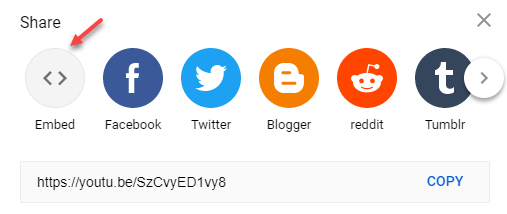How to Incorporate YouTube Videos On Your Website
YouTube is one of the best channels brands can use to create and share video content with their customers. Unsure about your YouTube content strategy? Read our advice on what to do with your YouTube channel.
By incorporating YouTube video content into your brand’s website, you can capitalize on existing brand assets to keep users more engaged while on your site!
Here are 3 easy steps you can follow to add YouTube videos to your website:
1. Create a Separate Page for Each Video
Each YouTube video should be embedded within the page. You can embed it by clicking the “Share” button underneath the video on YouTube.

That will bring up a modal window, where you have the option to “Embed”. This will provide you with code that you can copy, then paste onto your new webpage.

2. Add Transcripts & Accompanying Content
Now that we’ve got the video embedded, it’s time to add the transcripts. Each page should include human-edited video transcripts within the on-page copy. We always recommend human-edited transcriptions because auto-transcriptions are typically error-prone.
Be aware of Americans with Disabilities Act (ADA) regulations when adding the transcript onto the page. Get our checklist to make sure you are compliant with all best practices for accessible design here.
Search bots easily crawl transcripts in fully visible <div> or <p> tags. Usability for humans may dictate show/hide tabs, collapsible accordion sections, modal popups, or something similar.
The base requirement is that the transcript is visible when JavaScript and CSS are disabled. Including transcripts on the page makes it easier for search engine bots to crawl and humans to understand too.
We also recommend keeping the transcripts visible if it's the only unique content on the page. Some brands add in complementary copy expanding on what is covered in the video, while other brands choose to simply include a heading and the embedded video. If you fall in the latter category, you can hide the transcripts in a tab or accordion-style component as mentioned above.
3. Optimize the Page for Organic Search
Once the content is added, you can optimize this page as you would any other. Include a title tag, meta description and proper header tags in a clear hierarchy. Make sure your meta data is relevant to the video content and uses appropriate keywords.
You’re Ready To Go!
Now that you have the steps you need, you can get started adding YouTube videos to your website. But the tips don't stop here -- you can view our full guide to YouTube Marketing below:


